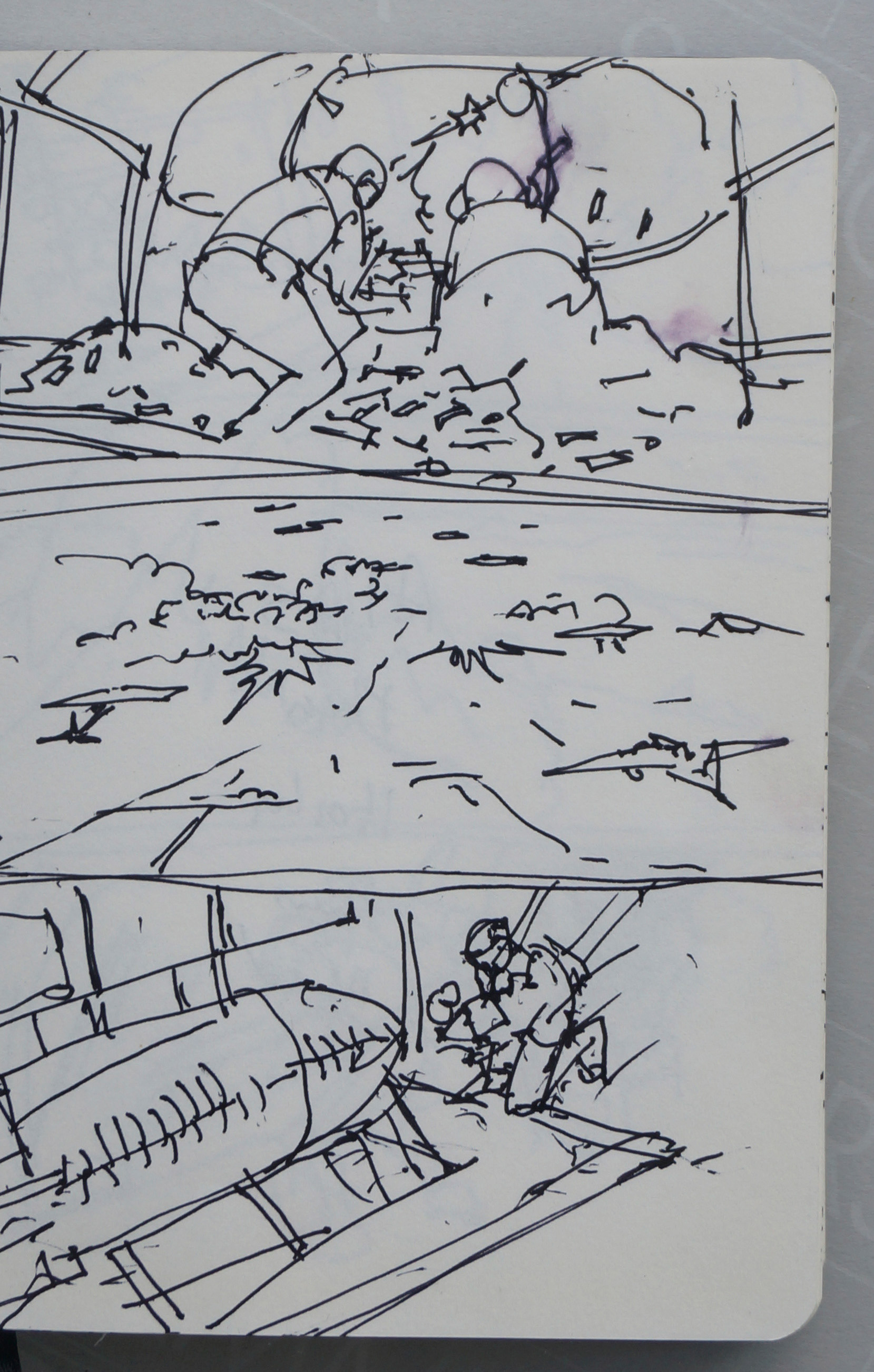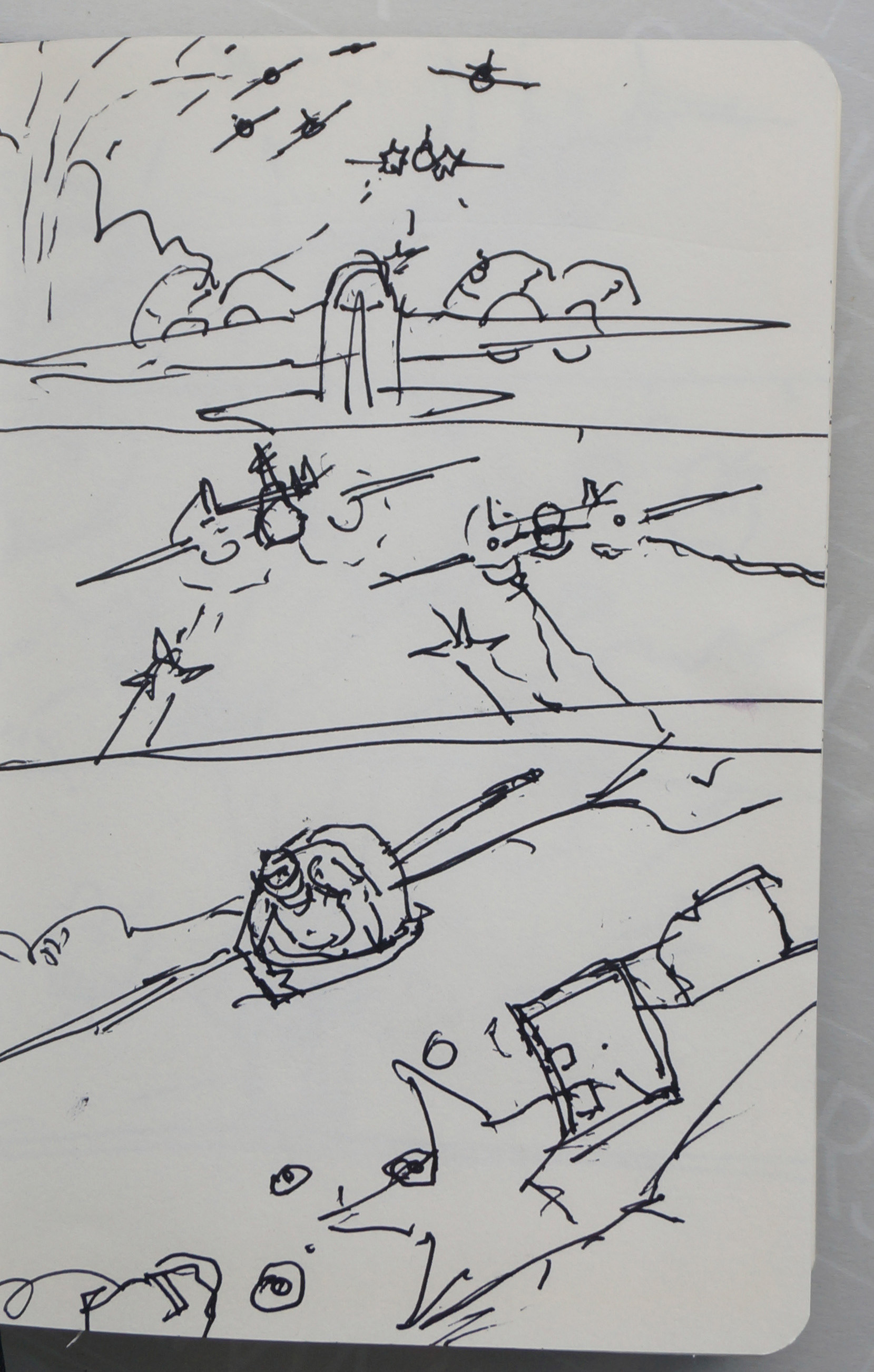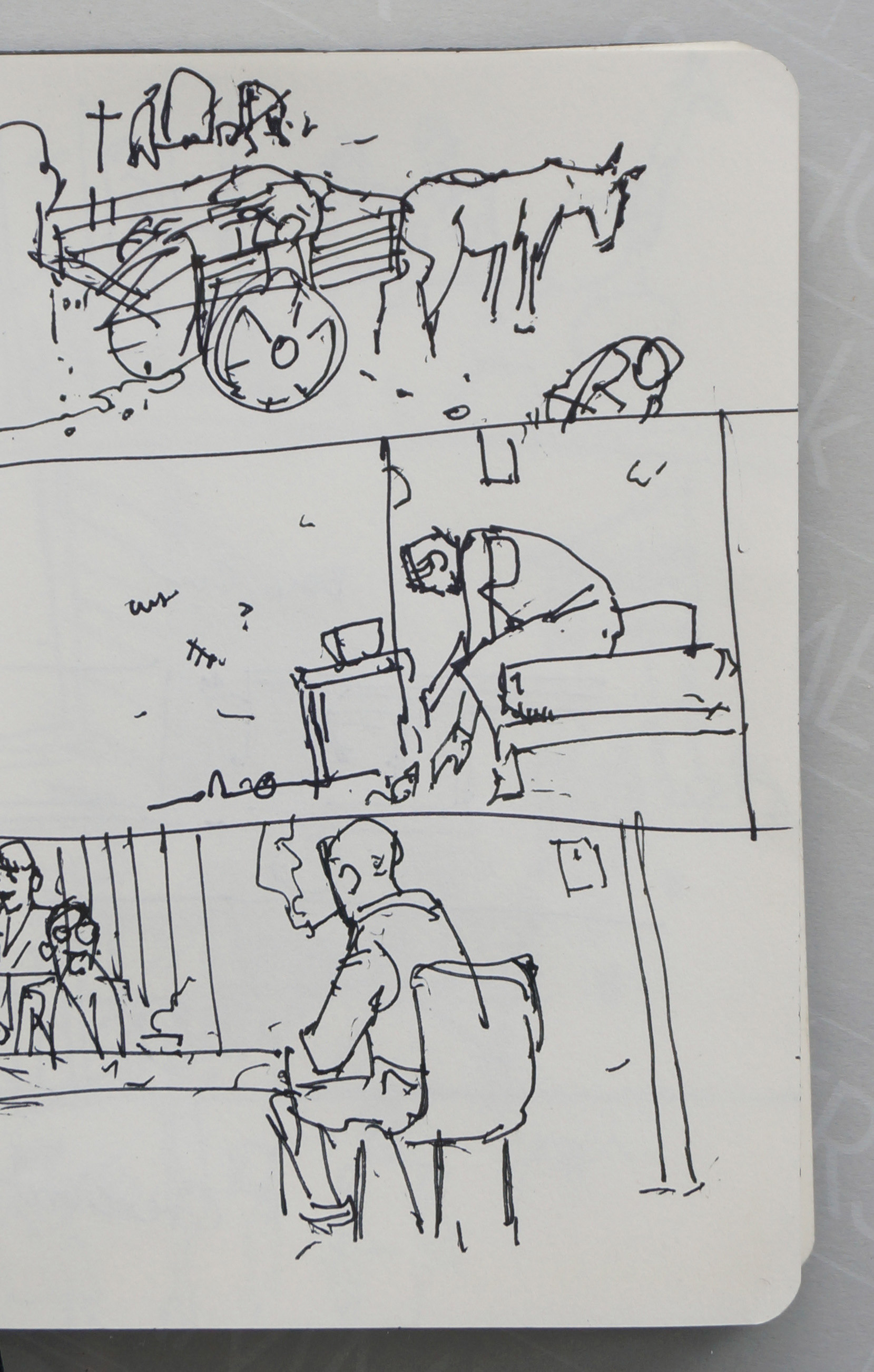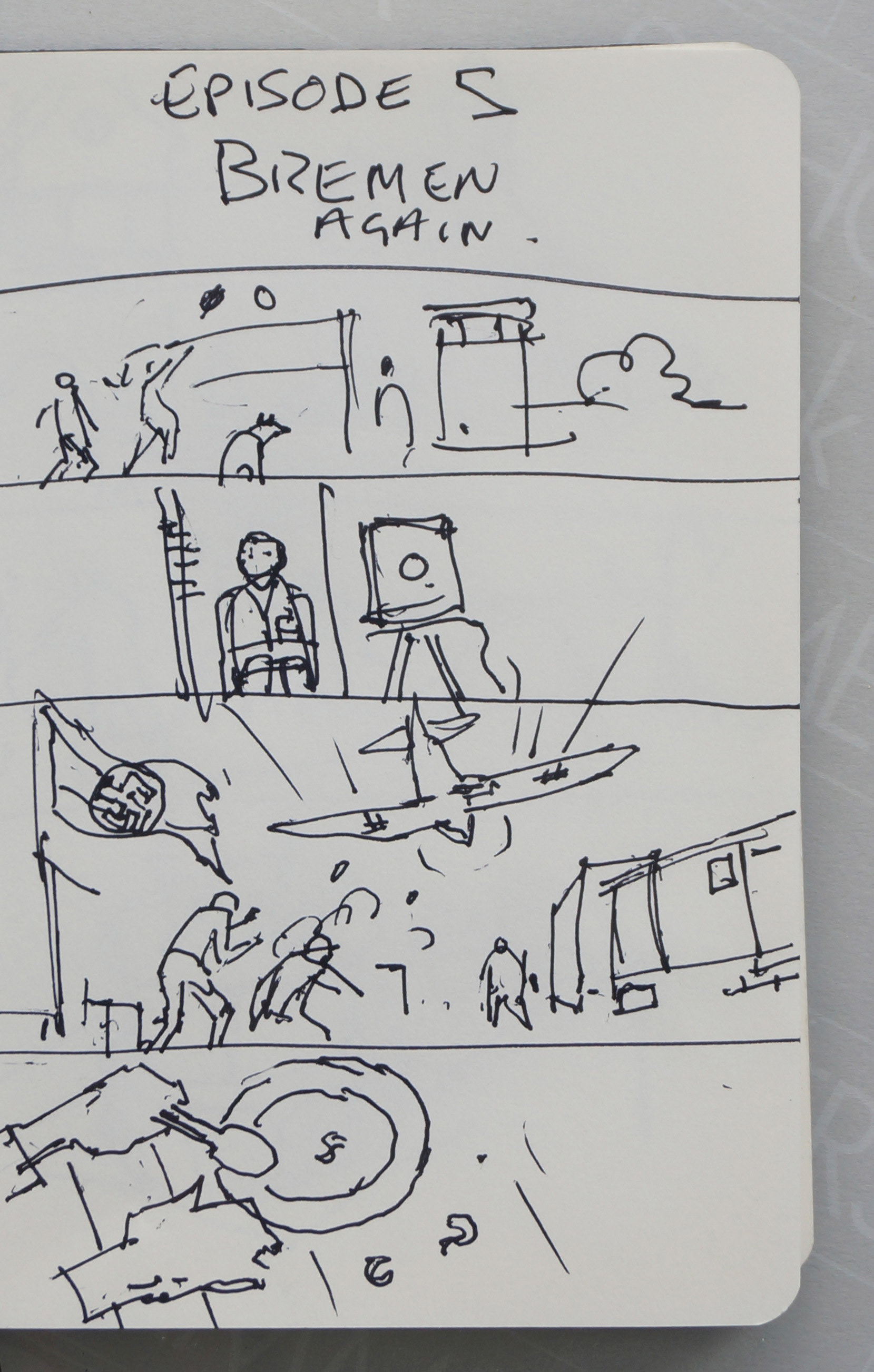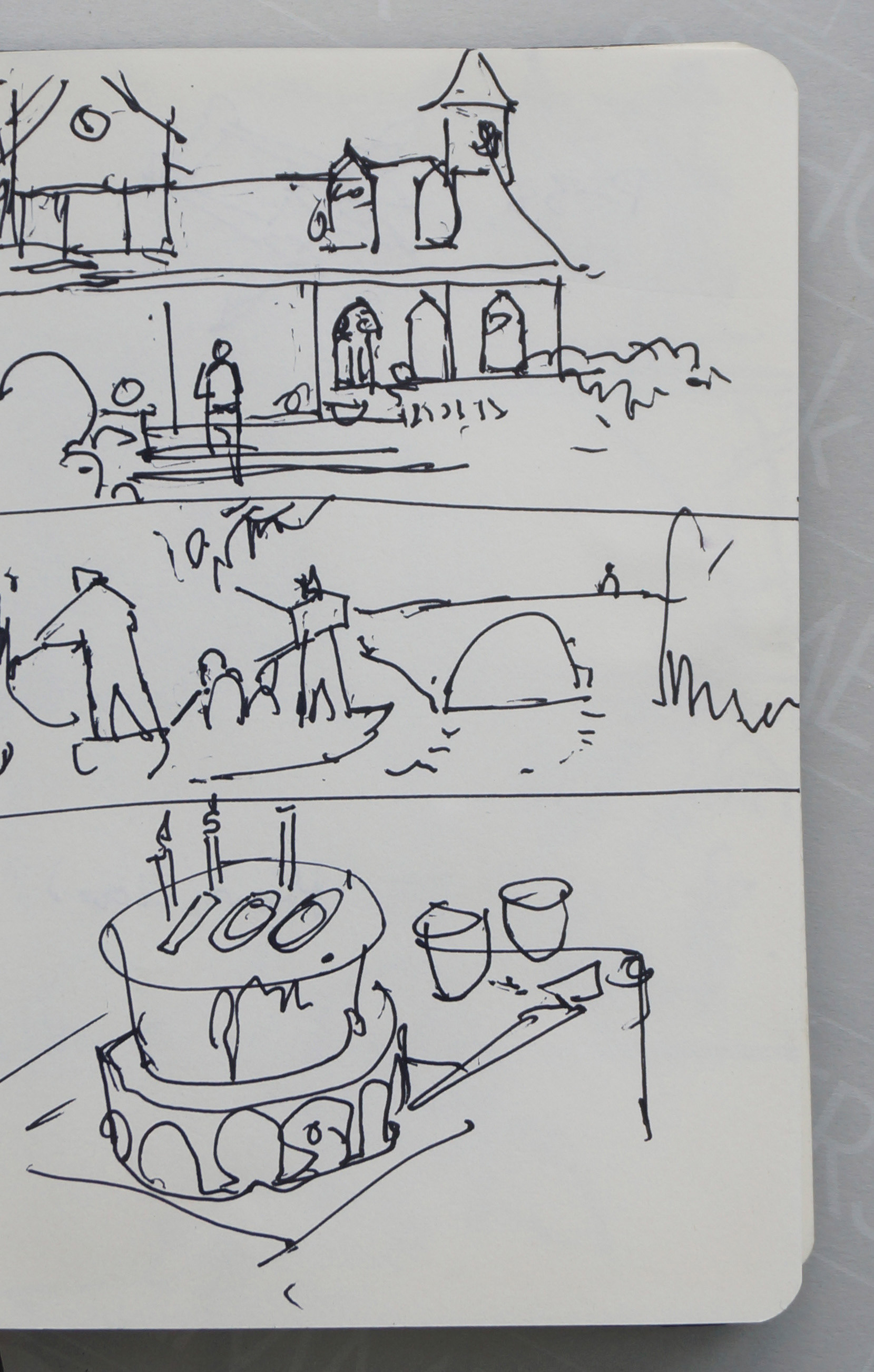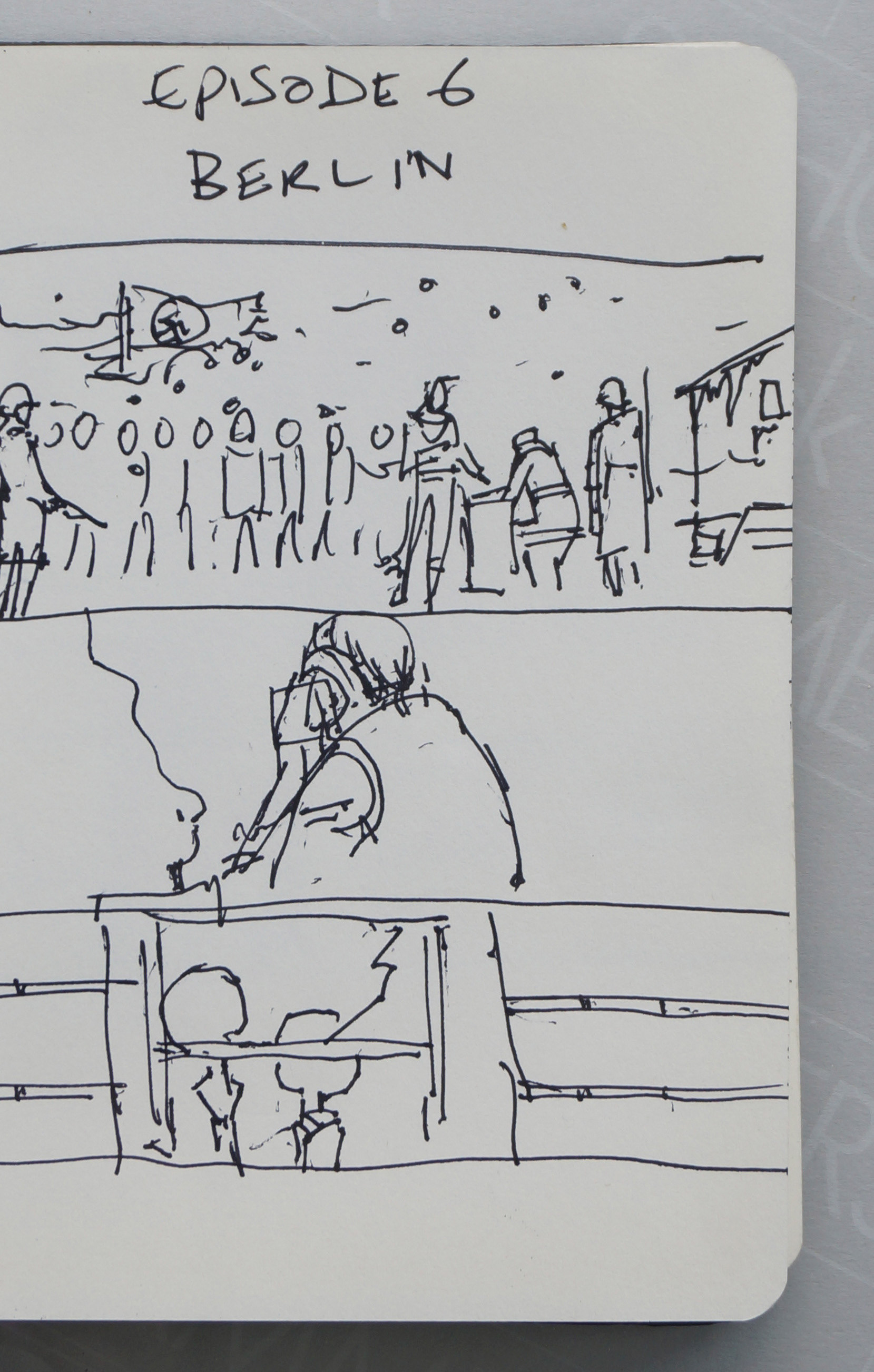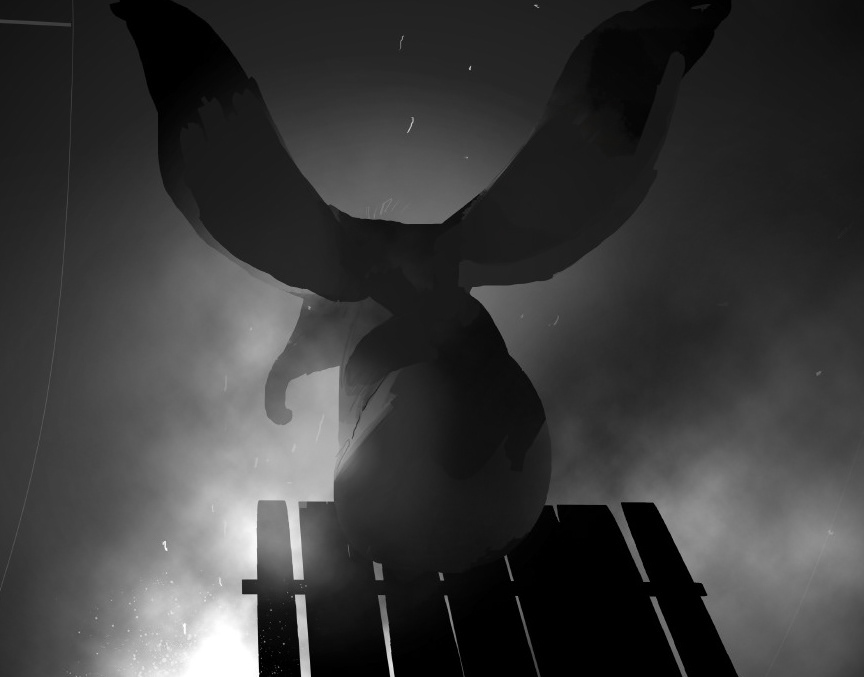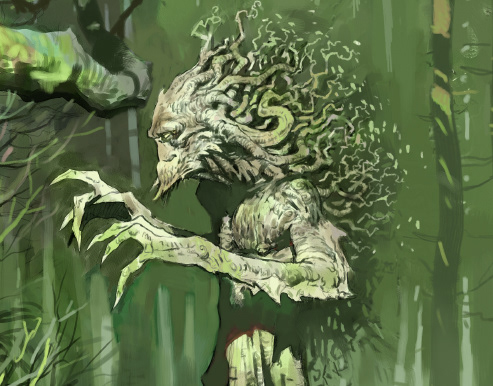Production designer Chris Seagers
Production company Apple TV+, Playtone and Amblin Television.
Colour visuals based on moments from the script
These colour shots are probably the way I love to work most. Colour and shapes make you feel what is happening without needing to be too 'real'. Early enough in the process that I don't have to get all the details correct. However I use 3d models of the B17s, Me109s and Focke-wulfs to get their shapes right. Not wasting my day trying to prove I can draw them!
B-17s engage the enemy. I like working in this more graphic style. Usually can only get away with it near the beginning of production.
MoftA had a wonderful script all the more jaw-dropping knowing that it was based on real events. Here the armada heading for the continent are met by rising squadrons of Me109s and FW190s . A mix of what it might look like and a diagram of the action.
Not sure you would have 'god ray's created in an aircraft rushing through the air but it's a good way of emphasising bullet holes.
Concept sketch to help the conversation about what the shot is about and a more finished visual to show what it might end up looking like.
Exploring the density of aircraft and the chaos framed by the B17 windows when the squadrons are attacked.

AckAck gunners scramble tulip fields and windmills

Gunners scramble grey day

AckAck gun placement


Parachute in to chaos

view from parachute
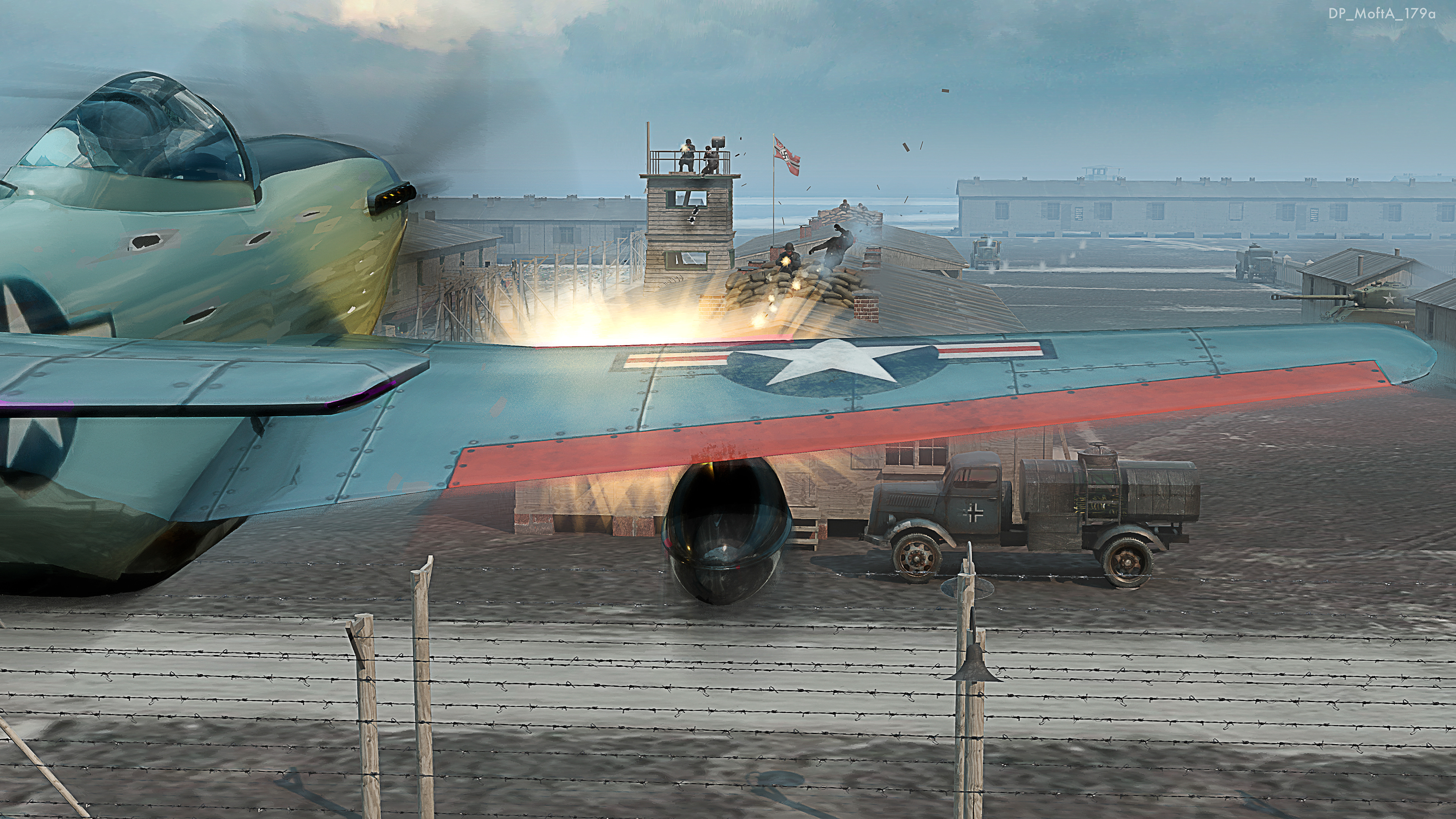
P-50 attack!

P-50 takes out the camp watchtower
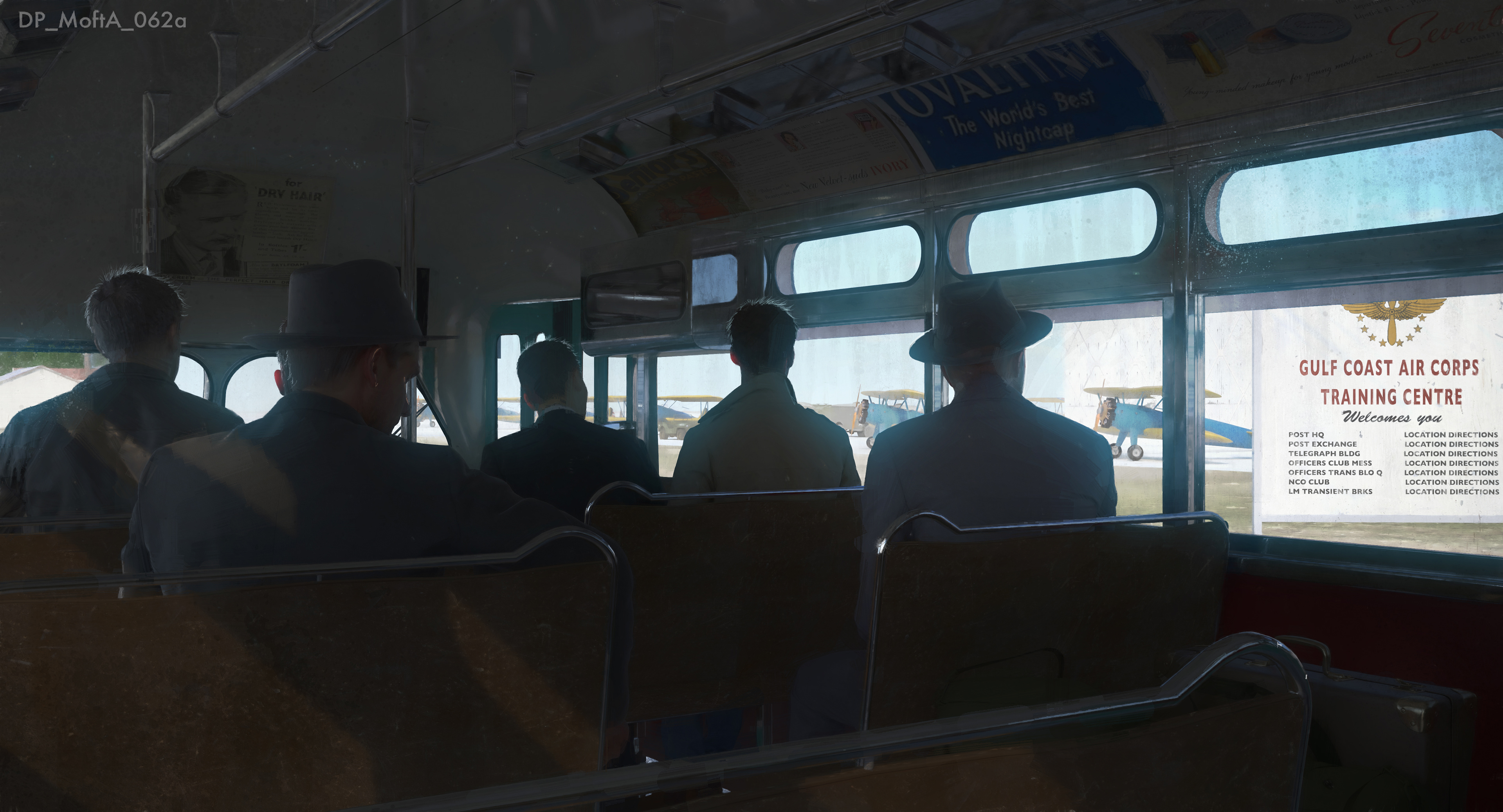
New recruits heading to Kelly's airbase
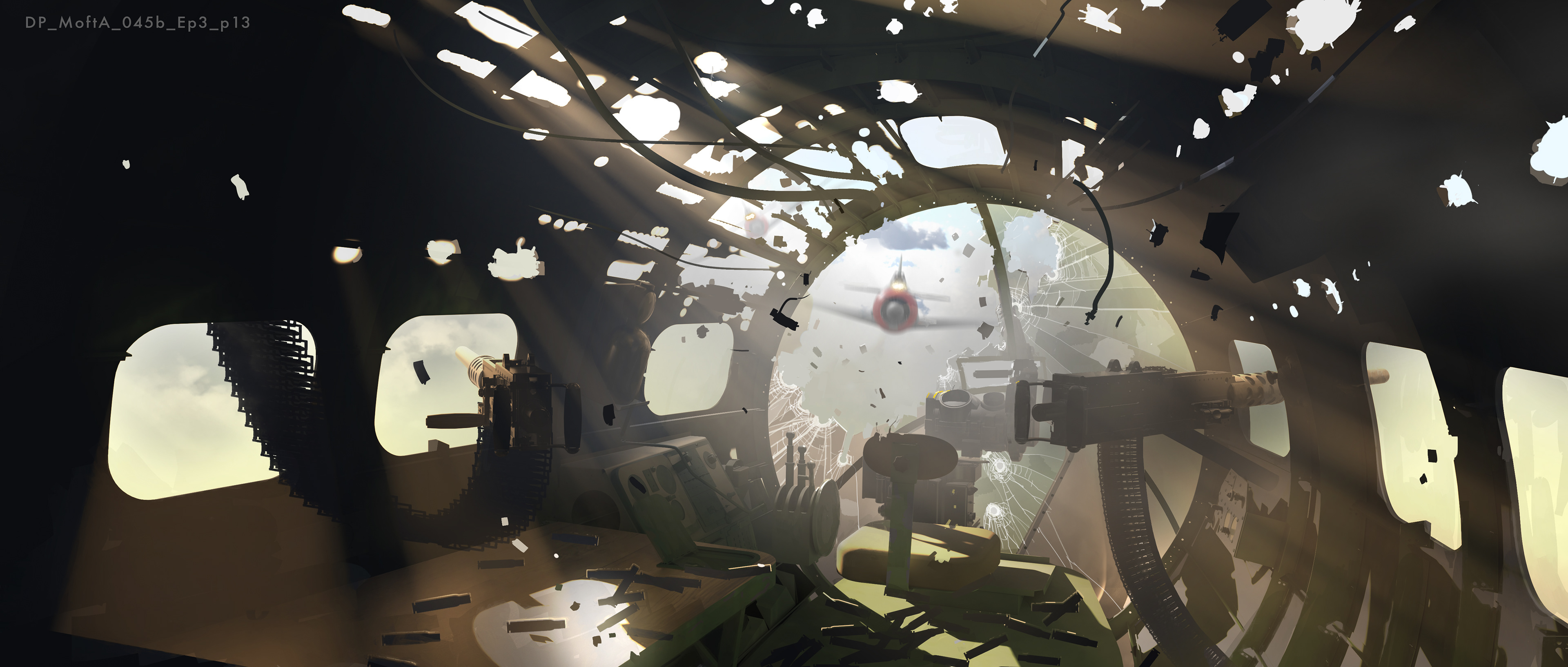
Battle Damage from inside B-17

'War Eagle' battle damage
Location visuals
These are almost entirely compiled with 3d elements - mostly imported from third parties and models from the art department. If I need to I will build individual pieces based on historical references or P&Es if they are available. Skies are probably from hdri downloads and figures are architectural figures that I re-texture to wear military garb. In a historical film good 'design' is good reference. My job as a concept artist is to show what the sets being built in a location or on a sound stage, combined with vfx set extensions might look like. The artistry is mostly in the mood, composition and lighting. Scanned architectural figures are the best because they look very natural. Sometimes posed (as opposed to scanned) 3d figures can look like bad actors in a scene so I avoid them.

B-17s foggy morning

B-17s sunrise clear sky

B-17 in Hanger for repairs
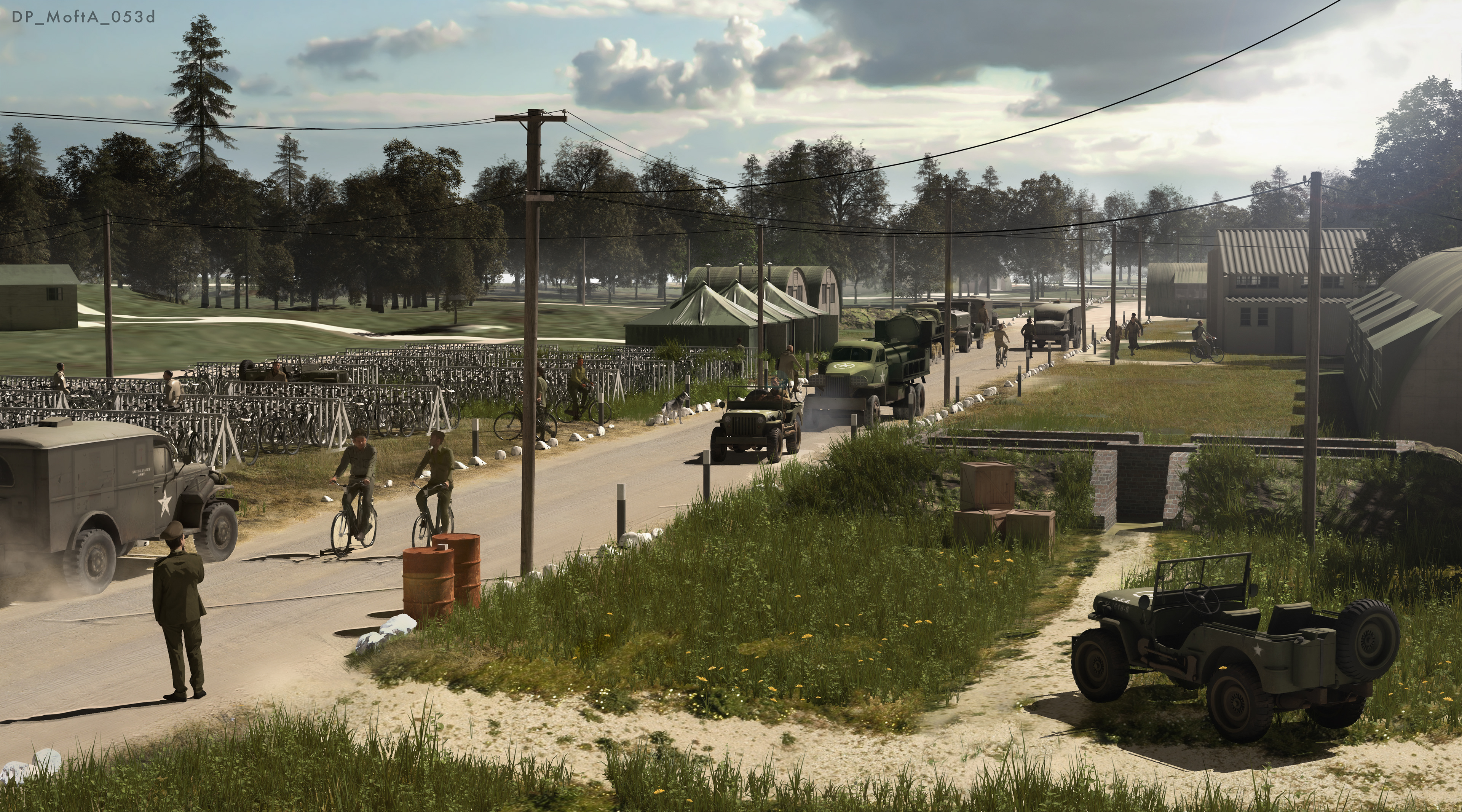
Abingdon Airfield transformed in to Airbase

350th Squadron building

Mooseburg CAmp tents were white in final

View from barracks

View from barracks winter
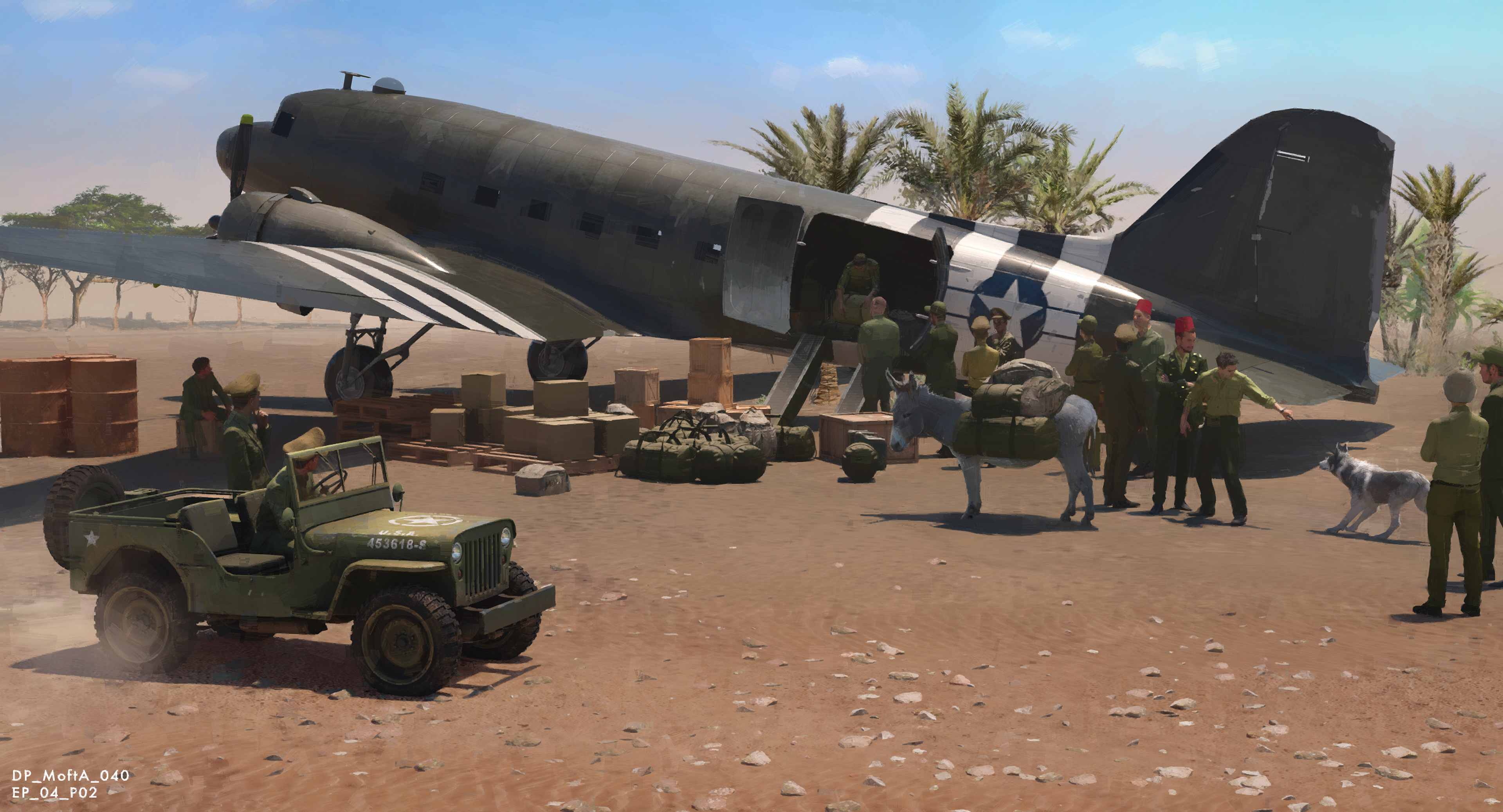
North Africa Airmen board the C-47

Clevland lands in high winds
Location Visuals Aerials
I did a lot of these aerial shots. There was a huge effort made by Chris Seagers the production designer to get the details historically accurate. Number and direction of runways and hard stands as well as location of surrounding towns and farms. The base was enormous but life carried on as normal just beyond the perimeter. We also needed to show what the bases and POW camps would look like in winter, summer and so on. Mostly created combining satellite imagery, maps, historical aerial footage, 3d models from the art department and a library of ww2 3d elements that I gather from turbosquid, kitbash and other online 3d libraries. 'Painting' the image is about 2% of the effort right at the end. I don't need the visuals to look like paintings but they always need some work to take the CG artificial feel out.




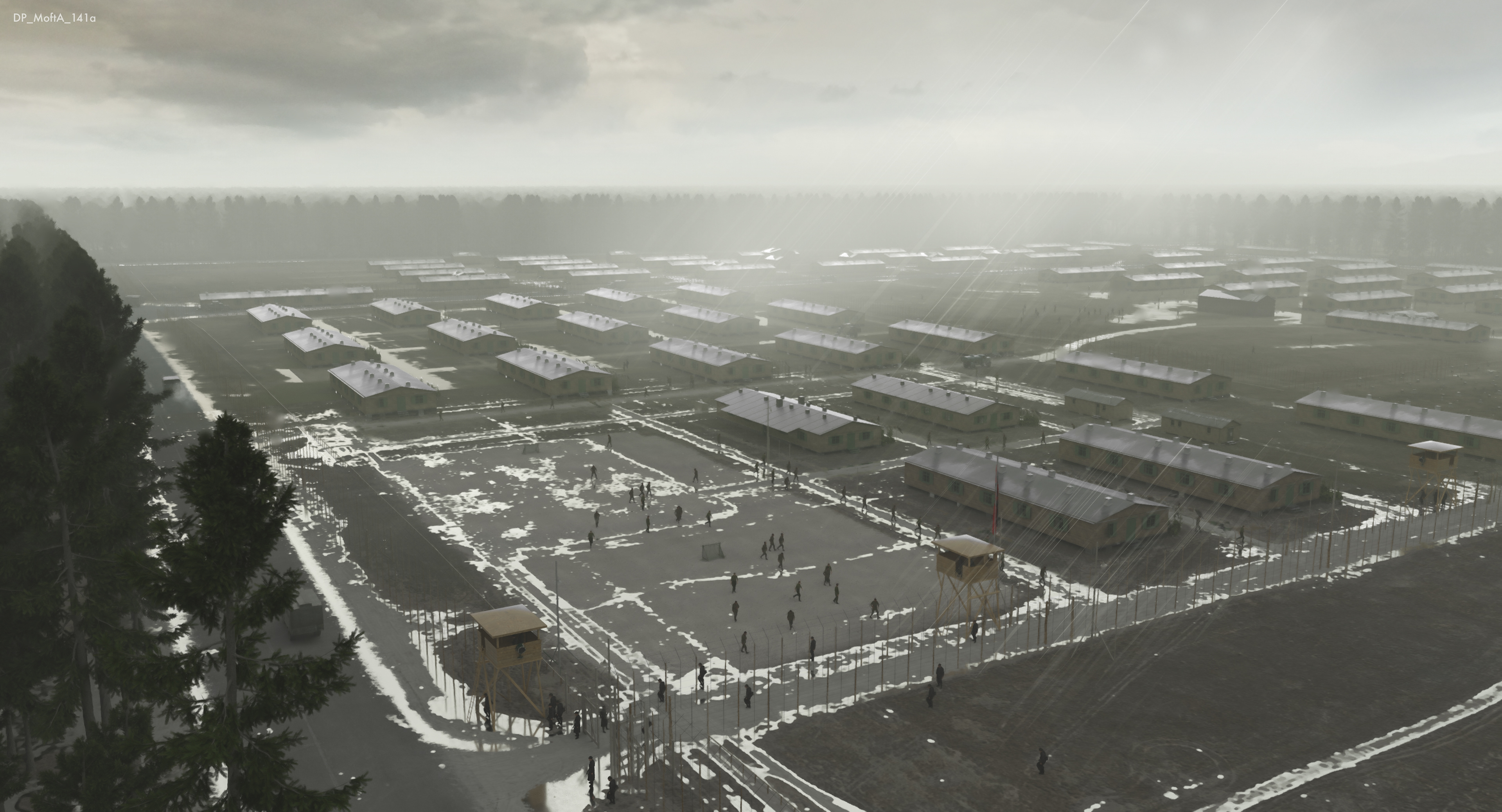


Sketches
I love doing quick black and white sketches to get a conversation going about the look of the film. I did a lot of these at the beginning of production including filling notebooks with quick little drawings to try and get the script to stay in my head (I am hopeless at remembering scripts).
The problem with sketches is that everybody from the producers to the director to the designer (Chris Seagers in this case) love them but very quickly ask for changes. ‘Can we raise the camera’ or ‘that B17 has the wrong insignia’ so it’s easier to move over to 3D when we start getting closer to production. I don’t like revising sketches-it kills them-all the energy is in the first blast, the first reaction to the story.
I would be very happy to hand the sketches over to a 3d artist or the VFX house to bring them to the next stage but I did that stage myself for MoftA.
At the bottom of the page are my notebook sketches. Too scrappy to be up top but might be of interest to some people who want to know about process. I work with a ballpoint pen so I can't erase - its about collecting information not about creating beautiful images. I have a pack of white sticky labels of various sizes which I use to 'erase' if I really mess up.

Fog delays mission. first sketch for MofA

flak explosions in dense cloud

Fly through fjords

Bombs away

AckAck 88s respond

B17s get hit crew bail out

Gun freeze

Air battle debris storm

Nose gunner trio

Waist gunner loses legs
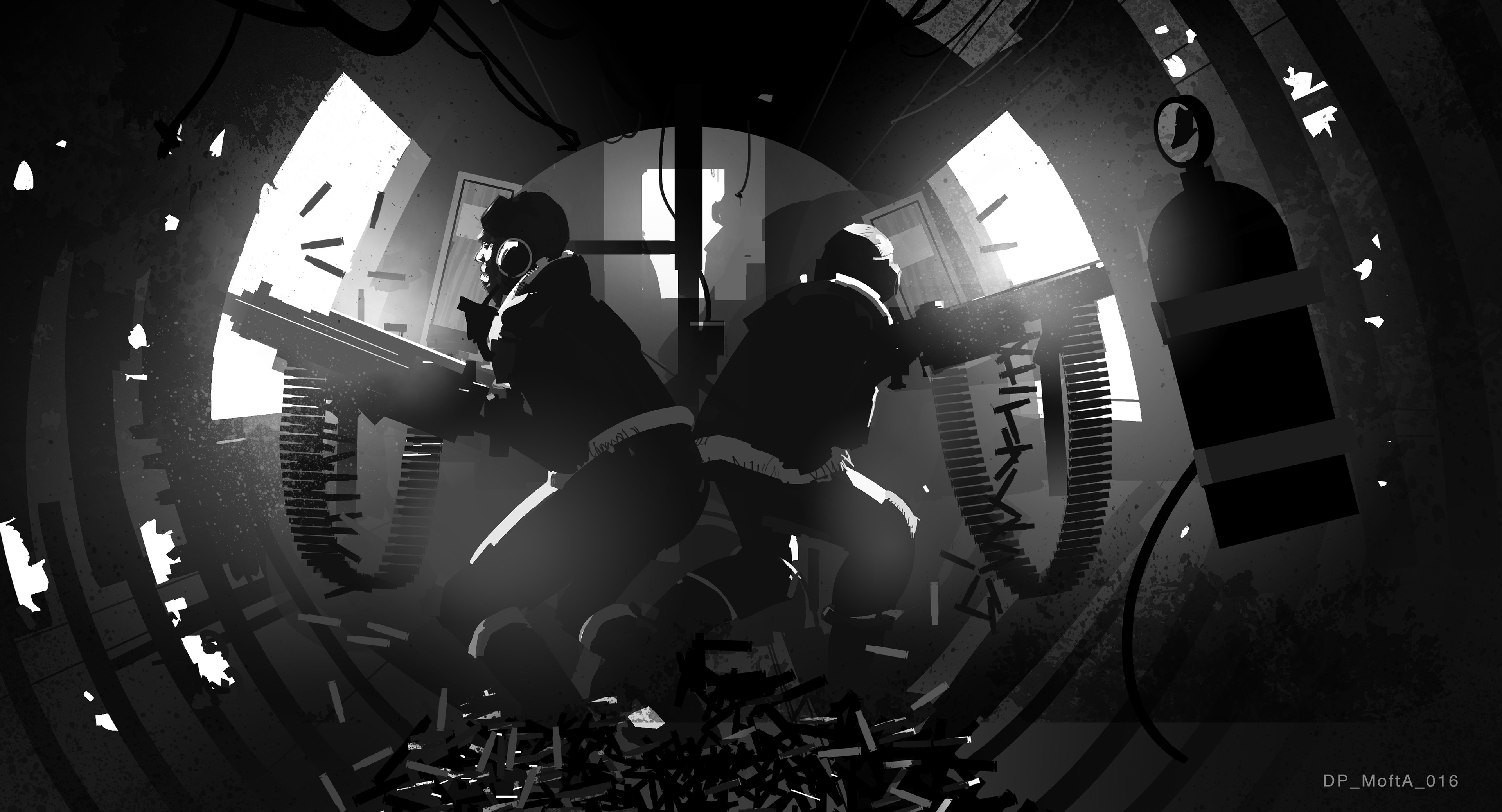
Waist gunners defend

Bomb bay doors crank

Ball turret hit

propeller danger


Ditch in the Mediterranean

Hanger repair

London Destroyed

London destroyed
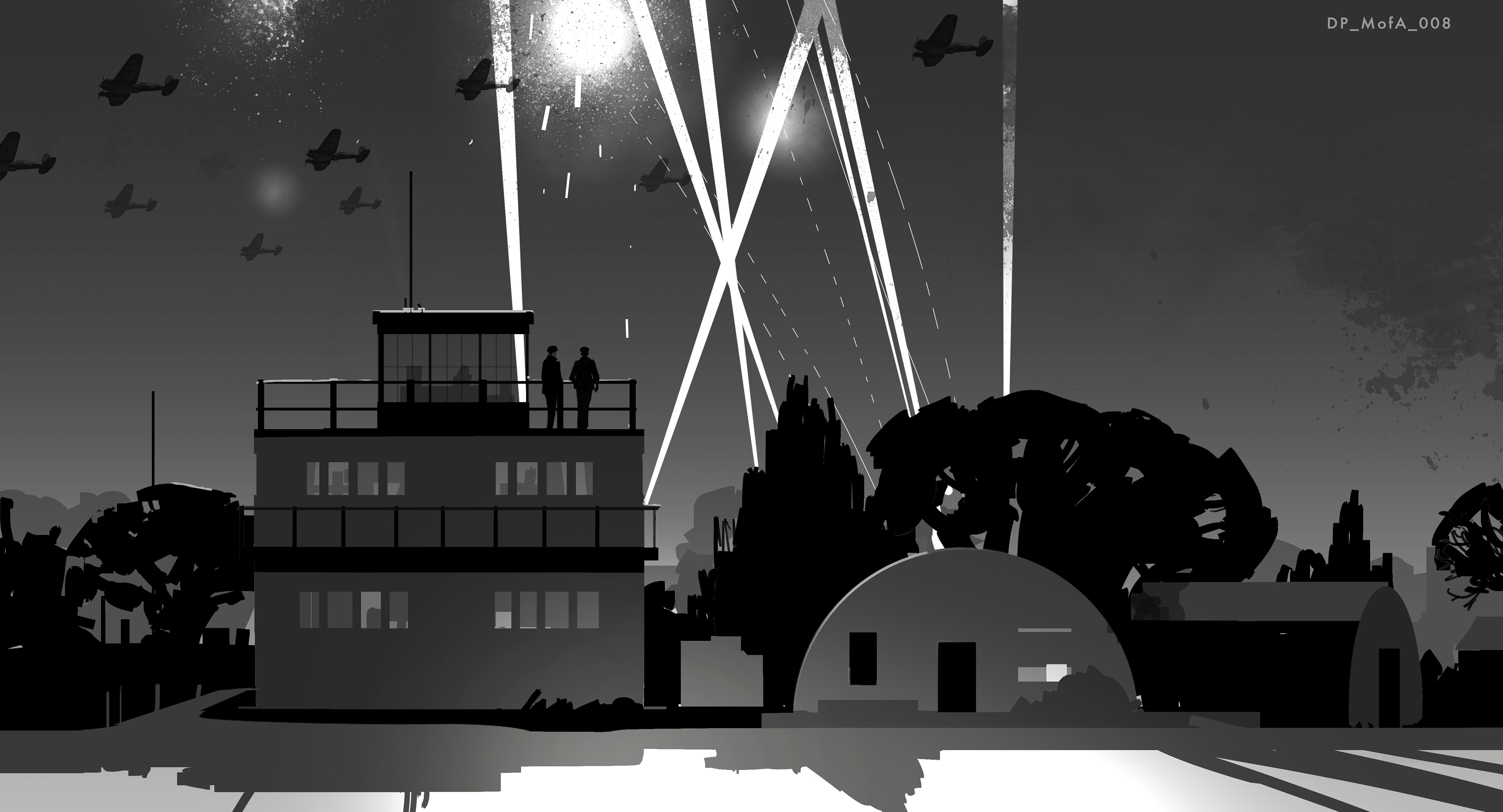
Thorpe Abbots Searchlights
Interiors
Art department supplied the set models and I supply the mood, lighting and distressing.

Thorpe Abbotts Operations Room
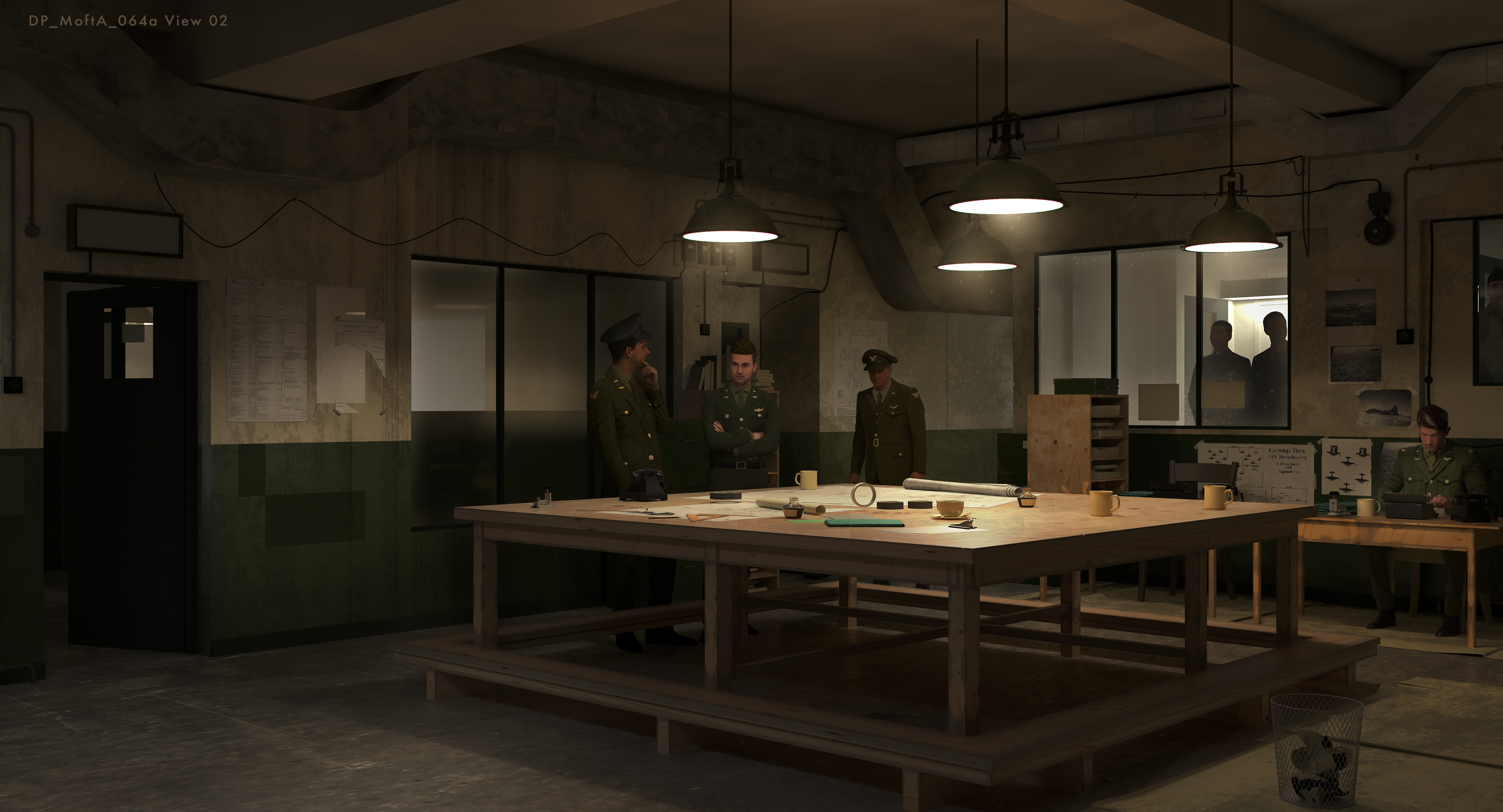
Thorpe Abbotts operations room

Equipment room Airmen get their kit before heading out

Equipment room storage
Set extensions and location revisions
Notebook sketches








